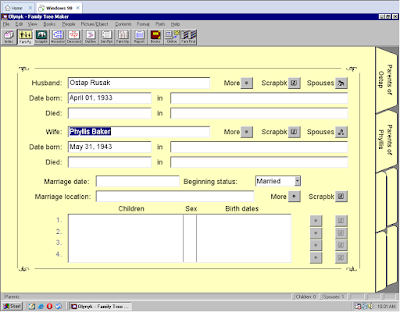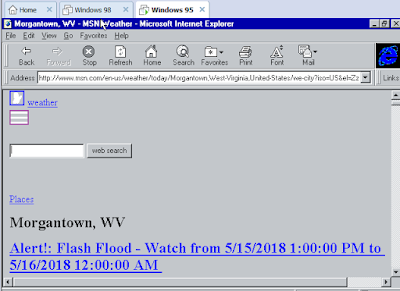This led me to trying to find a printout of a family tree that my brother had compiled some time before he died in June 2005. Unfortunately, I couldn't find the printout, but I found something better: a 3.5" floppy with the family data. That's when I discovered that my 3.5" floppy drive (yes, I still have one) had died. That sent me on a scavenger hunt at work, trying to locate a portable drive that I could borrow. I struck pay-dirt with my supervisor, who knew of a couple of 3.5" USB floppy drives that LAN Services used to use for flashing updates.
It took a bit of coaxing to get my Windows 10 computer to recognize the drive, and then I was further stymied by the data. The disk had a single data file: Olynyk.FTW. The FTW file extension was something used by Family Tree Maker. But then, things got crazy complicated.
First, Family Tree Maker software costs something on the order of $80. Then, it was a matter of the FTW file being in a very old, circa 2004 data format.
Fortunately, I was able to locate a free, downloadable installation file for Family Tree Maker version 4.0 for Windows 95 (May 15, 1997). I have a copy of VMWorkstation on my work PC, so I first tried installing Windows 95 on it from an ISO image. This was a non-trivial task, because in order to install the Windows ISO I first had to have an image file of a bootable DOS disk.
When I finally got Windows 95 installed, I was further hamstrung with various incompatibilities. The USB drivers were not native to Windows 95, and connecting to the Internet with Windows 95 was a real bear. I finally gave up on Windows 95 and installed a Windows 98 virtual machine. That allowed me access to the the internet. I still had trouble with the USB floppy drive, but I burned the data file to a CD (talk about a waste of space!), which worked with Windows 98.
I loaded and installed the ancient version of Family Tree Maker, read in the Olynyk.FTW data file and then exported it to a more portable GEDCOM format. With internet access, I was able to log into FileLocker.wvu.edu and upload the data file.
With that data, I was able to use a free Family Tree Builder program that runs on Windows 10.
I've been working with computers for 35 years, but I didn't appreciate until now how evanescent old data formats could be.
I guess anything I have on old computer tape is pretty much lost forever. And thank goodness that I don't have anything left on punch cards!
Post Script: Success!
I can't leave well enough alone. I re-installed Windows 95 and got the internet thing.
Big surprise: IE 3.0 has a bitch of a time resolving web pages -- even Microsoft's.







